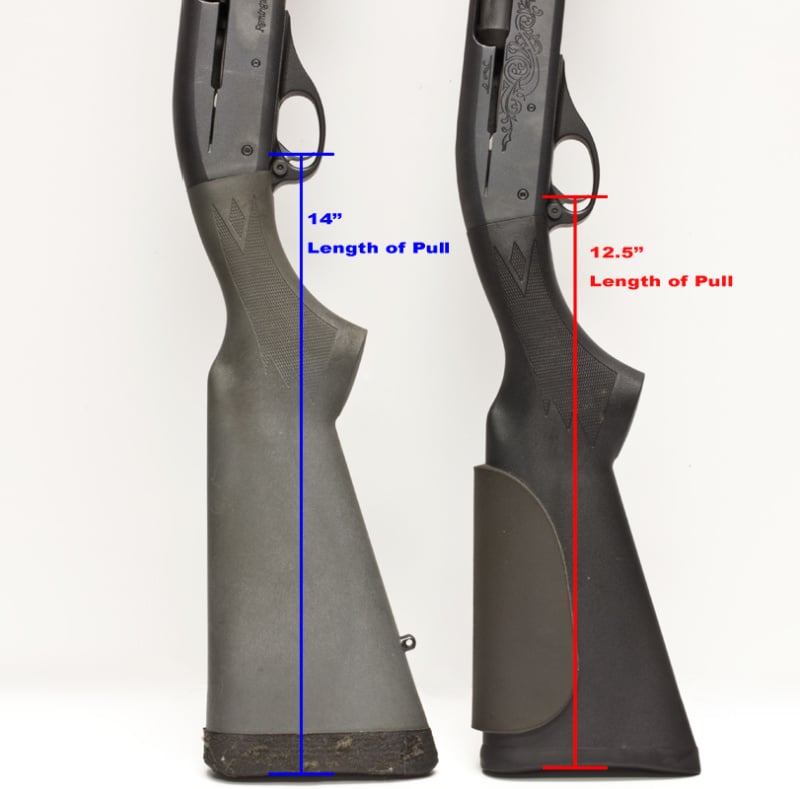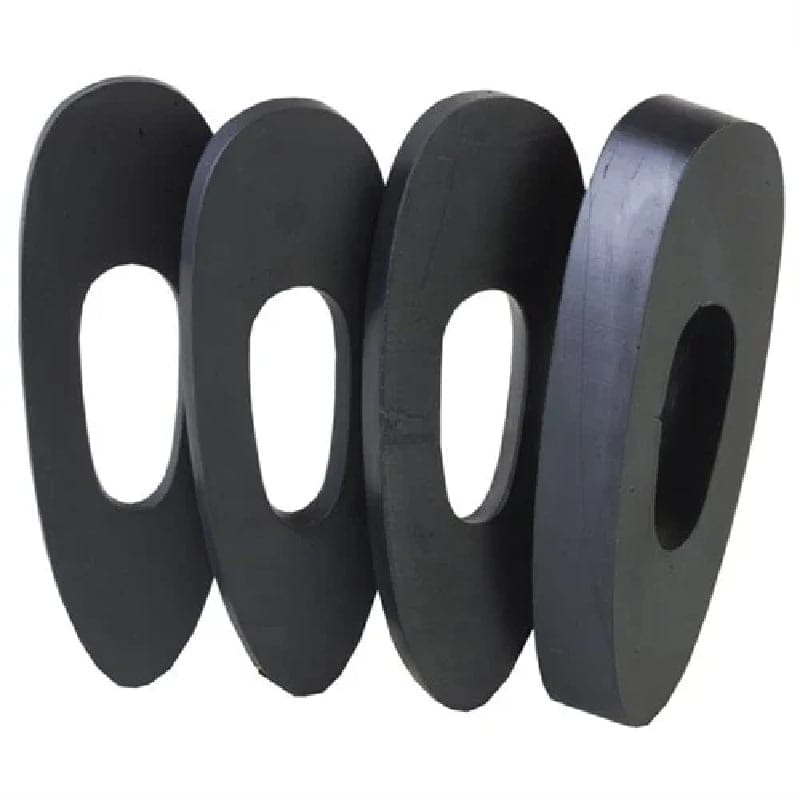Whether you’re in the market for a new long gun or you’re relatively new to the shooting sports, you’ve probably been hearing a lot of phrases and terminology you don’t quite understand. Or maybe you know what certain words mean, generally, but aren’t positive how they apply to your gun. One such term is “length of pull.” You’ve probably seen it around, but do you know what it means? We’re going to explain length of pull and why it matters to you as a shooter.

What is length of pull?
Length of pull, which is often shortened as LOP, is a term referring to the distance between the trigger and the rearmost, furthest edge of the butt of the gun. This term is specific to long guns and it’s used most commonly with shotguns, but is also often used when discussing bolt-action rifles. Sometimes you’ll see LOP being used to explain the dimensions of an AR platform rifle as well.
The length of pull measurement is typically given in inches. To find the length of pull, a measurement is taken from the face of the trigger to the very back of the stock (usually the center of the buttstock, always at the furthest edge). This tells you the length you’ll have to reach for the trigger when the long gun is shouldered.

Does length of pull vary?
Yes, there can be different length of pull measurements on various models of long guns. You see quite a bit of LOP listed around 13.5 inches, but there’s no rule saying it must be that distance. Also, LOP can be changed on many guns through the use of buttpad spacers or simply by adjusting the stock (if the gun has an adjustable, telescoping stock).
Youth-length long guns are made with a shorter length of pull. While this can vary, the average length of pull on a youth long gun is around 12.5 inches. This might not seem like a huge difference, but that inch really does have an impact on comfort and control during live fire.
Why does length of pull matter?
When the LOP on a gun is entirely the wrong length for the shooter, it can cause issues with comfort, control, and accuracy. How much it affects the shooter depends on just how far off length of pull is, but issues related to incorrect LOP include:
- Improper stance, either being forced to lean back or hunch forward.
- Poor cheek weld, leading to difficulty with accuracy or comfort.
- Lack of accuracy on target.
- Awkward shouldering of the gun.
- Inability to correctly hold the gun against the shoulder, making live fire uncomfortable and creating bad results on target.
- Trouble aiming the gun.
- Bruised shoulder or arm because the gun can’t be properly held.
Your LOP matters because you can’t aim or fire the gun accurately when you can’t hold it properly. And when LOP is far too long, it can even create an unsafe situation. For example, if you’re teaching a youth shooter and expect them to handle a standard-size shotgun, they could be truly unable to handle the gun safely.
How can you change length of pull?
How you adjust length of pull depends on the gun. Many shotguns and some bolt-action rifles allow you to use spacers to create more distance. These spacers are typically rubber or polymer inserts that fit into the back portion of your stock, making it longer. Quite a few guns ship from the factory with optional spacers included, but you can also purchase them as an aftermarket item.

If you have an AR platform rifle with a LOP that flat out doesn’t work for you, odds are good the gun in question has a fixed stock (meaning it can’t be adjusted). Since you can’t change the length of the stock itself, you can simply swap it out for a different stock entirely. We highly suggest telescoping stocks that can be easily adjusted by squeezing a lever and pulling or pushing on the stock. The nice thing about these adjustable stocks is that they can be changed from shooter to shooter or adjusted as needed for the situation, or for storage. Adjustable stocks are also offered for some bolt-action rifles.
Finally, you have the option of going to a qualified gunsmith who can work on altering your gun’s stock. There are times when this is the only way it’s possible to change LOP. And even in cases where custom work isn’t the only option, it’s usually going to be your best option, because it means the long gun will be specifically fit to your needs. That’s not a great plan for a gun that will be used by multiple shooters, but it’s ideal if it’s your personal firearm. Custom stocks are fantastic and the perfect way to get your gun right where you need it.
How do you measure length of pull?
There are a few different ways length of pull is measured. To get your precise length of pull it’s best to visit a gun fitter — not a standard gunsmith — and they can use a specially designed adjustable stock to discern the exact measurements. Of course, that can be pricey, and there are other ways to find out your length of pull as well.
According to HS Precision, length of pull can also be measured as follows:
For a stock installed onto a rifle, you will want to shoulder the firearm into a good shooting position. Note: your eye position will not be perfect if the length of pull on your stock is not correct.
Keeping your shooting hand in position on the rifle, rotate your arm 90 degrees with a bend in your elbow.
Measure the space between the recoil pad of your rifle and the crease of your elbow. Leaving approximately a ½-inch gap, the remaining length is what you will need for your proper LOP.

Does length of pull really matter?
Yes, LOP matters. Although it’s possible to accurately shoot a gun that doesn’t precisely match your personal LOP, it’s certainly more challenging. And if you’re a new shooter, length of pull that’s significantly off can cause a lot of problems. It can even cause you to form bad habits that can be tough to break. It’s understandable that you might not be able to precisely fit the gun to your reach, but it’s a good idea to get it as close as possible. That means not ignoring or tossing out spacers and considering getting a gun with an adjustable stock when possible.
This is especially important to remember if you’re teaching your kids — or kids in general — to shoot long guns. It might seem like a silly investment to buy a youth-sized gun, but in reality, it’s useful and smart. Sure, it’s possible to teach kids using standard-sized guns, but it’s easier for them to learn and creates fewer bad habits if the long gun being used is youth-sized.
Have you ever checked your length of pull or considered that it might be throwing you off your long gun game? Share your experiences and tips in the comments section.


